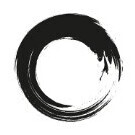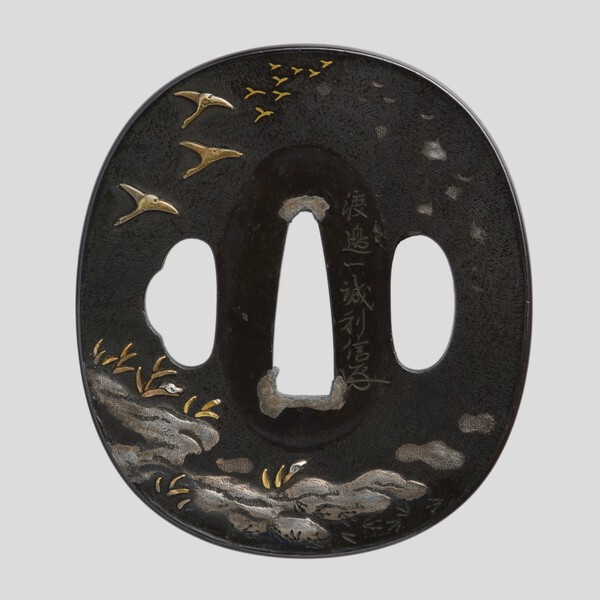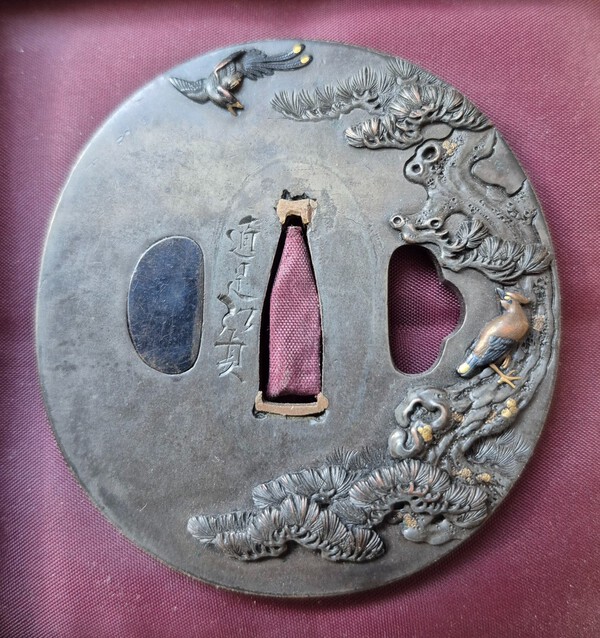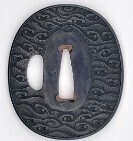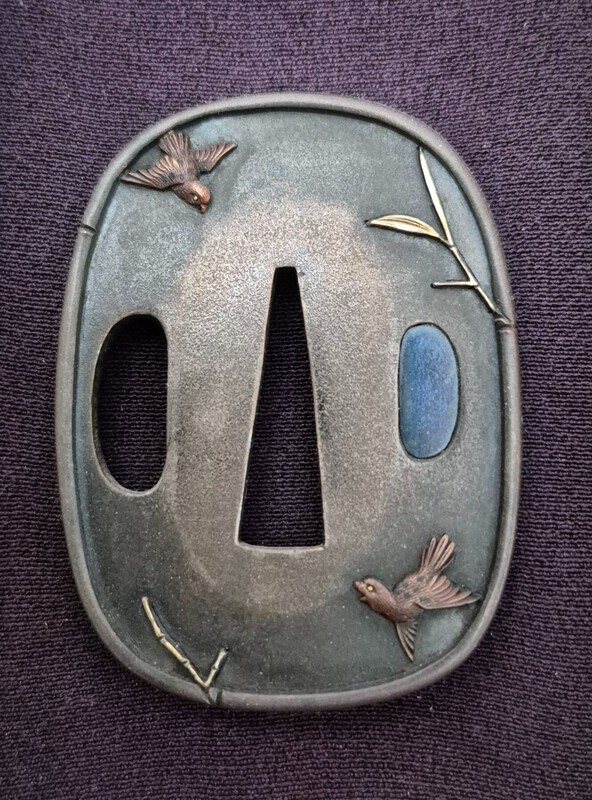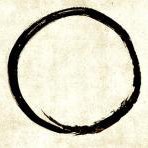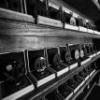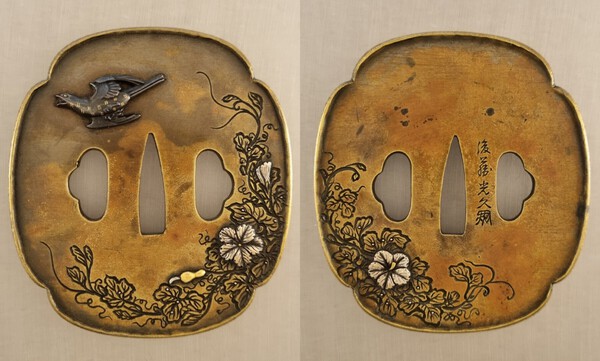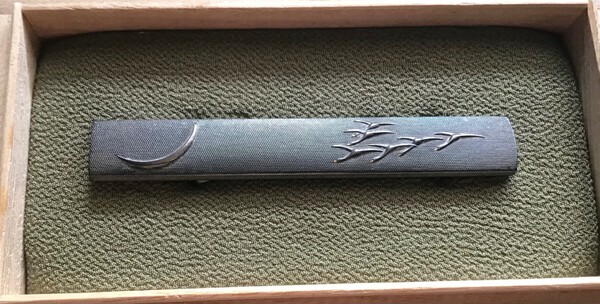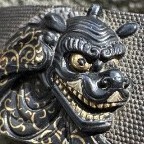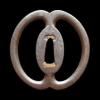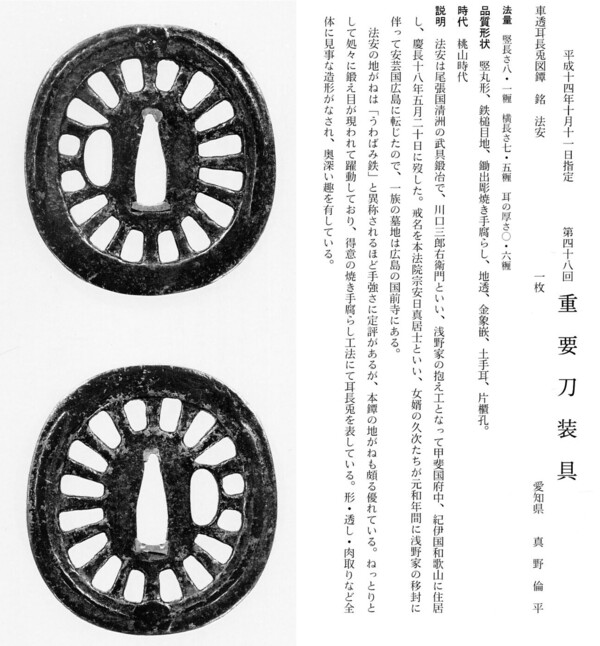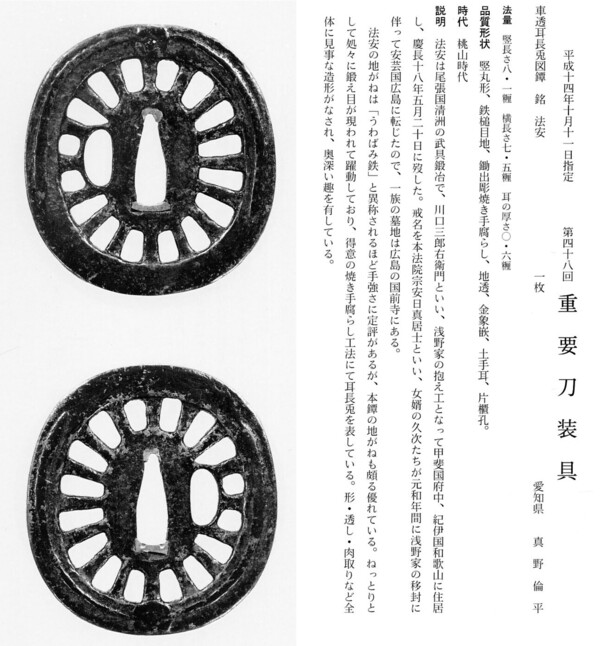Leaderboard
Popular Content
Showing content with the highest reputation since 08/22/2025 in Posts
-
What follows is simply a different view on how and why to get into this collecting field. It is based on my experience and is purely my opinion. Just some random musings. 1.Before you dive in understand how the market is structured (it’s exactly the same as any other collecting market) Imagine a pyramid, wide at the base, pointed at the top. At the base there are a great many collectors interested in a wide range of swords for many different personal and aspirational reasons. These will usually be the more modestly priced swords but that does NOT MEAN THEY ARE CRAP. As you gradually look higher up the marketplace pyramid you will find the numerical customer base quickly reduces the higher you ascend and as the price of the swords increases. At the top of the pyramid you will find a vastly reduced customer base able (and willing) to spend large sums of money on the rarest of swords. This is pretty obvious stuff but the new collector should now start to think about where they might envisage themselves ending up. What are their aspirations (because they will vary enormously) What are they aiming for? Above all, what is realistic. 2. Ask yourself why are you joining this hobby? What do you want to collect because there is a great variety…..and remember it’s your decision, no-one should attempt to tell you what to do. This is your collection, your hobby. Military stuff? Just blades ….. Old swords, newer swords, modern swords? Complete swords (ie with koshirae that have not been cobbled together or made recently) Just long swords? just short swords? Just something to hang on the wall? How much money have I got that I can expose to risk. Do I want a varied collection or just one sword? Would I rather change my car? 3. Basic knowledge needed (can be gleaned from numerous books) How to spot a fake or replica How are swords actually forged, hardened and polished What flaws and problems in the blade will be encountered. How to recognise them and which are serious 4. Take a look at the marketplace in action…..sword prices in various sectors…auctions, dealers, forums, Japan, …..easily achieved on the internet. Within my target market what might fit within my budget. 5. Anyone around nearby that I can talk to….clubs, shows, dealers, internet forums. How do I network and build contacts? 1-5 above should have caused some forethought and most importantly a reality check and maybe the formulation of some sort of plan together with an understanding of the basics of swords. It need only take a few months not years. OK….. now what? Well a few facts to keep in mind….. It is unwise to buy swords for investment purposes. The higher the price generally the greater the risk. You will not buy an “important sword” for a few thousand but you can certainly buy acceptable quality and interesting examples (and don’t be misled by those that sneer and deride lower valued pieces) If buying from a dealer understand and respect that it is how he makes his living (or perhaps partially) and therefore he will have his profit built in. On very expensive swords that profit could be substantial. Many dealers are highly respectable and experts in their field. Some are not. Beware eBay and all similar auction sites. If a sword is available on the internet from a dealer in Japan it is usually because no one in Japan wants to buy it at that price. (Worth just thinking about that is) Always try to actually handle a sword before you buy it. At some point you might want to quit the hobby or raise or lower your sights. Be prepared to change. You will find out if this rabbit warren really is for you. Ultimately…..spend your money on what makes you happy and try not to make too many mistakes along the way (we all made mistakes, some more than others apparently🙂🙂🙂☹️) It’s a journey and an adventure, have some fun…..remember what you’ve decided and go buy something.23 points
-
Got discharged today. They did some stuff, but some stuff they were reluctant to do because of the blood thinners and need to close some veins. So we are waiting it out to see if I decide to dump huge amounts of blood again. Sunday was scary...almost passed out and couldn't move my arms while I was showering to take myself to hospital. Ended up calling an ambulance. First time. Anyways, all ok for now, we'll see what happens. There are no indicators of anything specific causing it or anything very concerning. G&C scopes are clear...still dealing with the same abscess/fistula thing from the beginning of the year.15 points
-
Dear all, A little grace and understanding goes a long way. When I first posted on NMB, years ago, I had purchased a mumei shinshinto blade, a humble beginning. I was greeted in the replies by Darcy who generously spent his time explaining attributions to me, he was graceful in his every words. He could have sneered and said it was a paperweight. After all, he was dealing in Koto masterpieces. There was nothing for him in this sword to appreciate. But he wasn’t dismissive - instead, he saw rightly that this was an entry into the world of Nihonto. Over the years, I came to the conclusion that there is truly no point in lecturing on what “ought to be collected” - the reality is set by the market participants, there is no central planning committee that sets prices. It is all supply and demand. What matters is honesty. Honest description of the items, genuine effort to depict reality as it is. Markets require information to function correctly. Whatever the level one collects at, there is always a bigger fish who - in comparison - will make one’s entire collection fit into the “paperweight” category. Tokubetsu Juyo grandmaster sword? Well, there is a Jubun one that is longer, with a more complete nakago, and a single mekugi ana that belonged to the Emperor. The Jubun collectors can look down on the Tokuju collectors. The Tokuju collectors can look down on the Juyo collectors, and the Juyo collectors can take it out on the Hozon collectors, and so on. Trivially true statement. But there is no point to it. Live and let live, learn and respect others, fight for truth, and don’t fall for delusions. Best, Hoshi14 points
-
These books are not related to my own online Gokaden series, they are translations of Tanobe Sensei's books on the same topic, as Brano pointed out. Bizen I (Osafune School) has been translated by me and submitted, and I think the publisher Me no Me has it scheduled for spring of 2026. I am meeting with them in Japan in two months and discuss the future volumes, based on the way Tanobe Sensei is comfortable with continuing writing them (and has made progress so far).13 points
-
Hey fellow Tosogu fanatics! I've been away from the board for a little while due to work taking up much of my attention recently but that doesn't mean I've stopped collecting these past few months! I have a couple new acquisitions I have been waiting to share with the board so this post is well overdue! As the title suggests, two of my latest acquisitions include birds in the mise-en-scene! Hoping for any knowledge the board might have about the artists Toryusai Kiyohisa or Marukawa Hiroyoshi (Mito school). Also, post your favourite birds from your own collections!12 points
-
12 points
-
I posted this elsewhere and think NMB would enjoy it too. Attached are 3 kozuka of same design -Taira Tadanori death waka on an arrow (under cherry tree)-. First to the right is Goto Tokujo. Middle one is his son Kenjo. The last one on the left in its own box is either later Goto main line or Goto sideline (my opinion). ----- Purpose of this is to see second photo where you can observe the design went from thinner but more intricate to progressively deeper larger relief and design. Some of the complexity lost…11 points
-
Hello everyone, Okan Asik here. I'm based in Dubai and specialize in authentic Japanese swords and fittings, which I source directly and exclusively from Japan. Some of you may already know me and my story. My interest in Japanese swords began many years ago as a collector and researcher. After moving to Dubai a few years ago, I decided to go full-time and build my life around Nihonto. Since Japan doesn’t ship swords directly to the UAE, I personally travel to pick up each piece. For me, this isn’t just business; it’s about placing these works of art in the hands of those who will truly appreciate and take care of them. I look forward to sharing items with you all on the forum. Warm regards, Okan PS: My website will be up in a few months(hopefully), but in the meantime I’m going to share items and updates on social media so please follow! facebook.com/ginzamaru.dubai11 points
-
Thank you for your calm and thoughtful perspective, Hoshi. I'd like to remind everyone that Brian is still dealing with ongoing health issues. Part of the reason I’ve been made moderator is to help ease his load during this time where he is distracted by serious real life challenges. When discussions turn uncivil or overly contentious, it undermines those efforts and risks adding unnecessary stress to someone who is already going through a lot. Out of respect for Brian, the forum, myself, and maybe most importantly: for one another. I’m asking everyone to please be mindful of their tone, exercise patience, and prioritize civility in their interactions. This is now the third or fourth thread that’s begun to spiral, and I’d really prefer not to lock another one. I trust that as a group of adults, we’re capable of letting some things go, at least for now. In support of Brian and the forum. Sincerely, -Sam11 points
-
I'll try again, because the last few posts completely missed the point. As a complete beginner, I would think: what's going on here? The problem is that many “old hands” seem to have forgotten their own beginnings. And I can only speak for myself: the problem wasn't the swords I bought when I was starting out. The problem was that I got five different opinions from five “old hands.” Doesn't anyone remember the feeling of going to someone who obviously knew what they were talking about and anxiously awaiting their judgment? And that's because - you were hardly able to assess the quality of your new acquisition yourself, - and you were just as unable to gauge the quality of the judgments. A negative judgment could destroy everything in seconds and effectively render a promising new acquisition worthless to you. Even in my early days at the NBTHK-EB, I observed how members or guests would quietly and secretly take an object to Micha Hagenbusch. Then there were two options: either they would return just as quietly and secretly with a grim expression on their faces and let the piece disappear into their bags. Or they would proudly carry it in front of them and others would then be “allowed” to admire it too. And I experienced the same thing! An old friend warned me during my first participation (I don't know) 25 years ago(?) to take certain blades with me. Instead, he recommended that I take a katana with me that - dated from the Kanbun period, - was suriage but still bore his signature, - had already lost some of its material, - and had no paper. In other words, the worst possible choice imaginable. However, the katana had an en suite koshirae with decorative fittings made of solid silver, typical of the late Edo period. So I tried to focus my questions on the mounting. But Micha Hagenbusch was not interested in the mounting at all. He pulled out the blade, took a quick look at it, removed the tsuka in a matter of seconds, and asked me several times, “...what do you have against the blade, what do you have against the blade??” Very quickly, we were surrounded by curious onlookers, and I was extremely embarrassed! I couldn't come up with a reasonable answer, not with my level of knowledge at the time. But it was a key experience that made me swear to myself that I had to change something! That I had to get to the point where I could form my own useful opinion. The opportunity to see good blades at the meetings was one of the important steps. Incidentally, I already had quite a few books before that. But I often imagined that what I found in the books looked exactly like what I thought I saw on my blades. But it was only when I started studying real blades that I realized there was a world of difference between what I was holding in my hand and what I had at home. That's why books are certainly useful, and they are the best support for the real study of blades in your hand. But they cannot replace practice. And part of practice is having someone experienced to stand by your side. Otherwise, you just stare at the blade like an autistic person. You see a lot and yet nothing. You have to be able to name what you see, but also what you don't see, otherwise you can't be corrected, etc... That was a fundamental insight, and yet many years of learning followed. And it continues to this day. I have no idea what my opinion will be in 10 years. But that's just my story, which I can tell a newcomer here. And a newcomer can draw conclusions from it. But they MUST take the initiative and ask questions. They must also be prepared to “let their guard down.” There's no shame in being completely wrong about a kantei. Micha Hagenbusch always tried to understand why someone gave a certain wrong opinion. And I learned a lot from his corrections. Unfortunately, this type of Kantei was not very popular. Many wanted to know in advance what to expect so they could prepare themselves accordingly. Which is understandable. There are many ways! For me, knowledge is still the most important thing. Acquiring a particular piece is more of a logical side effect. The only problem is that I find it incredibly difficult to acquire anything the longer I continue on my path. That's why owning things is no longer a priority for me. But luckily, not everyone thinks that way, because that would be a real disaster for me! As I said, there are many paths!11 points
-
I think it is totally understandable that there are several different forums and closed groups floating around various places. In my ideal world there would be just 1 huge meeting place where everyone would get together and share info freely. Of course real life doesn't work like that... People are people and not everyone will get along, and there are probably studies on why certain groups will form etc. Just checked that my membership here at NMB is closing in 18 years, and to be honest this is one of my favorite places online and has been for a long time. I hope to be a member in here as long as the forum is up. I have met so many amazing people through this forum online and some I have even met in person in various places. I admit that I am too grown into the forum that I feel quite puzzled how people are not joining in for gold membership at such cheap overall price. For me it is about the community in here, maybe the difficult thing is getting the new folks feeling welcome in the community.10 points
-
With Georg's (Promo) permission, here is a little reminder of Masayuki (Kiyomaro) exhibited at the Berlin Samurai Museum. The sword will be on display in the museum's blade room until next spring and is probably the only work by Masayuki (Kiyomaro) on public display in Europe. (I'm not sure, but currently Kiyomaro is probably only on display at Touken World in Nagoya. However, I'm happy to be corrected). Next to Masayuki, his great rival Koyama Munetsugu stands peacefully side by side, along with other works from the Shin Shinto period, which “round off” the picture of this last phase of the Edo period in terms of sword smithing. So if you happen to be anywhere near Berlin, Germany, you should take the opportunity to visit Masayuki here.9 points
-
Here is the favourite bird-themed tosogu from my collection: a tsuba by Watanaba Issei. It depicts the southward migration of geese in the autumn months and their return to Japan in the eighth lunar month known as “Kanaraigetsu”. As the geese migrate south from their summer visit to Siberia they inspire thoughts of the coming winter, but also give a strong feeling towards the Japanese spirit. I fully appreciate how especially during times of change and uncertainly that this yearly event brings a sense of unity and national pride. The importance of geese in Japanese art was further secured by stories of several military heroes who had achieved victory in battle when a sudden breaking of ranks by flying geese signaled an ambush. This protective role of the birds led to their frequent use in decorating tosogu. I particularly like the detailed carving of the geese on the omote and the snow on the reeds; you can see them buckle under the weight. On the ura the imprints of the geese's feet in the snow are very charming, as well as the sekigane which is made to look like snowfall, a lovely touch.9 points
-
9 points
-
9 points
-
9 points
-
9 points
-
9 points
-
9 points
-
The discussion is good and there are several good views. There is nothing really wrong in suriage Shintō swords. However I think you must understand how much value you will put on the item. For some smiths you can find hundreds of signed blades and suriage blades are unfortunately not on top of the list. Then you need to weigh long swords, short swords, possible polearms etc. It is actually quite confusing for people starting out. I am fairly long time member of NBTHK but my interests in swords do not really align with the interests of the organization. I like stuff that they don't appreciate that much and for me it is ok. I know what I like and to me it feels good but I wouldn't recommend going so far out of the "norm" for anyone. I do think the traditional sword appreciation is bit hierachical you are supposed to like certain things because it is traditionally accepted. I think the "mainstream" collecting is safest and in general the best option. Also I feel that when the talking goes to Jūyō swords and what is acceptable and not, then it gets to actually bit advanced stuff and I think new collectors maybe shouldn't be too stressed about that stuff in the beginning. Jūyō stuff is actually very complicated in my opinion and I believe I am not the only one. Sometimes it is very puzzling. For example in the session with 3 Tomomitsu passes at Tokubetsu Jūyō, one of them was historical Masamune of Yasukuni jinja. Now NBTHK attributed the sword as Tomomitsu and it went through their whole system and finally at the top TJ. Last 2 years it was not on display at Yasukuni jinja because it was in the NBTHK process but I finally got to see it this summer. Yasukuni jinja displays it as Masamune as it has historically been, I feel they disregard NBTHK opinion on this. Now is it Masamune or Tomomitsu I cannot say but I feel in overall quality the sword is not super nice, however it has very large historical value.9 points
-
There's some truth in that, but to draw from an analogy, consider the car collecting world. There are some, only interested in rare Ferraris, spending millions, and wouldn't even glance at say, a classic Japanese car. For me, I appreciate a Ferrari 250 GTO, and a Mitsubishi GTO, with approximately the same level of interest. I wouldn't buy the Ferrari, because it's well outside of my price range. My argument is, if you're interest isn't wider, perhaps a classic Mini, Lancia Stratos, MGB, Bugatti Veyron, Lotus Elan etc. you're not really a car guy, you'd be well, a snob. That's not saying you have to like everything, but (as with Nihonto), there's different styles, eras, workmanship, showmanship, utility, technology, state of preservation and fame / prestige and ultimately, monetary value. In both fields of collecting, people are well aware of the wallets required to collect in the different areas, but the disparaging/dismissive remarks I often see on this forum sometimes only serves to spoil someone's enjoyment of where they've chosen to collect. Personally, I'm fortunate enough that Juyo blades are attainable - many can't afford that, many can afford much more. But whether you show me your Gunto or Sadamune, I appreciate them for what they are and enjoy people's knowledge and enthusiasm about their collections - and don't need any put downs.9 points
-
I think Rayhans advice that has been discussed is very good for high level sword collecting. Some wording he has used might be bit provocative and ticking people off. However the issue might be that there are different levels of collecting. To me it has seemed in recent threads that it is difficult for people of varying collecting levels see eye to eye. What is seen as a no go in high level collecting could be perfectly accessible sword in lower level of collecting. For a brain teaser people can think 15 Kongōbyōe swords vs. Mumei Tokubetsu Jūyō Rai Kunitoshi. I know high level collectors would pick the TJ Rai Kunitoshi and I would choose 15 Kongōbyōe, it is just a matter what you feel is correct to your personal collection. Life would be boring if everyone would just want to buy the same swords.9 points
-
This is a good point, would it have come to where I am now if not for the 100? When i finally started working and earning i set out at first on a path of accumulating as many Nihonto from all the roads. As you know in Nihonto we speak of the roads like Tosando, Tokaido, Sanindo, etc and I thought i could master the Nihonto if I saw a single sword from each kaji along these roads, that became a mammoth task and I eneded up with a very flawed collection because each road or even each of the Gokaden is spread across a millenia and have different representatives. Then I decided to focus on certain districs within the gokaden but to do it for each district across their respective lineages. So you can imagine again a huge task and one that saw me buying single swords from Kamakura period to Shinshinto for Bizen for example. It is at this point I met a group of collectors who helped me understand that im all over the place. Without direction and study and focus I would not achieve what I had originally wanted. They explained that take Hizen, the Kaji in Hizen did everything from Soshu to Hizen hada to Masame, etc but their roots lay in the Heian and Kamakura periods. They asked what do you really want to know about Hizen that studying the original kamakura kaji cannot teach? And this was true of course. They introduced me to study and to observation on swords I would not be able to afford at the time because I had exhausted my budget. Until I had settled on what I wanted to study then they helped me to understand how to whittle down my collection. I could see by then that I had spent a decade plus collection only what I could get my hands on and not what was really representatives from the various schools, I was doing a means to an end style of accumulating and not collecting. Having a community can really save people in this jungle of Nihonto. There is a reason a society is led by senior members vs inexperienced. The swords I have today are still from that original batch, much less but they are the ones that fall into my road, the road I want to discover in Nihonto. And having streamlined im very content reading and learning and letting myself come to blades that fit my path rather than just accumulating or filling a slot. The collection also includes swords from more recent purchases that again fall into my road. I can say at one point I had 15 Kongo Hyoe swords from the inception of the school to its demise many centuries later but it is such a small representation of their work and very ignorant of me to have thought I was doing justice to them as a school. By whittling down the collection i also got to understand what was quality, by going to study sessions with people who had excellent pieces who also studied swords we could never hope to own, we get closer to our hearts content. We begin to see. I was shown a Masamune and TJuyo Chogi back to back as an example and those are moments you get to really study and memorise what you're looking at. Will I ever own one, no, would i have been able if I hadn't spent unwisely, maybe and it would be a single sword collection and I would be content. So, the craziness of accumulating led me to waste money. Would I have been here if not for that, i think if I had listened very early on to the people screaming at me to focus and study first, yes I would be here inevitably. You must understand that selling of the 100 was basically hitting a complete reset button. I started from scratch. My only wish for new collectors is, don't waste by rushing. Study and see and then buy whatever you like after you know your feet are firmly on the path you want to walk. Don't get duped by dealers of low end items. Respect yourself and your intelligence and your hard earned income and buy quality, it will serve you well in the future if you need to sell. Will there be mistakes along the way, yes, but they should not be the kind that makes you reset 10 plus years of hard work and studious love of Nihonto, that is a very arduous and painful path.9 points
-
8 points
-
Eric came here asking for thoughts on this sword. A number of experienced members chimed in with opinions and observations. And while some were delicately stated, and some not, I found myself learning from the things I had missed and overlooked none the less. Eric asked for thoughts, and to his credit, welcomed all of them. This is the way.8 points
-
8 points
-
8 points
-
Hoshi: I'll echo your humble beginning. My first posted sword elicited a fair amount of banter, eventually being labeled "a turd" by one of the long-time folks. It was a little disheartening, however I still like the sword because it has some unique and not-often seen features. Not bad for a "turd." John C.8 points
-
Considering the emphasis that is now being put by @Jacques on a single chisel stroke, it might be pertinent to refer to @Markus's highly interesting article on comments and observations made by one of the fathers of modern sword study, Dr. Honma Junji. https://markussesko.com/2021/06/08/honmas-questions-1/ Most specifically, this quote.8 points
-
I am very familiar with the mindset that if a sword isn’t Juyo, why bother—but I don’t share it. I recently sought the opinion of a good friend for his thoughts about a blade I was debating getting, and he asked me if I’d be content owning a sword that would never go Juyo. For me, the answer is yes, but not because I don’t care or don’t aspire to them. Truth is, I do own a few Juyo, and one is my all-time favorite. But right on its heels it is a Hozen token blade I bought for $2,000. If my house were on fire, those are the two I’d grab. And if I only managed to reach the Hozon, I’d be ok with that. The Hozon will likely never be Juyo, and that’s fine—papers don’t change what a sword is or why I like it. Darcy even noted this fact. (See his “ladder fallacy” posts.) Papers don’t change a blade. What matters to me is the artistry, the history, the workmanship, and the smith—not what certificate it might carry. But that said, it’s important to recognize that Juyo blades are special. Whatever you feel about Juyo swords there is something everybody should keep in mind about them: they serve as recorded works of art and as such are available to everybody to study and learn from. That’s a real contribution to posterity. But dismissing everything else as “lesser,” or sneering at Juyo as toys for rich collectors, are just opposite sides of the same bad coin. I know some collectors who (wrongly) dismiss Juyo blades as playthings of spoiled rich collectors. They disparage Juyo blades and those who like them because they see them and those who want them as elitist. This too is BS and it needs to stop. In the end, this is a hobby we should celebrate, not fight over. Love what you love, share what excites you, and respect that others might feel differently. Seriously, people. This is a cool hobby. Remember that always.8 points
-
And here a example of a Hoan Tsuba. NBTHK Hozon attribution Hoan. This should be the third or fourth Generation, middle 17th century. A good example for the etch technique they have used......and this is a rare Tsuba with no additional Holes for Kogai and Kozuka. One side .....butterflies over grass....other side blossoms8 points
-
Greetings, I believe you’ve been misinformed. Jim is very much alive. I just exchanged emails with him a few days ago….8 points
-
Awesome post, Colin! Clear guidance for everyone. I think it's also important to remember that as you climb the pyramid, there's a certain place where some pieces can be difficult to move/sell/trade. It's kind of the upper upper middle/lower top tier, kind of a slow zone, where blades are too expensive for most collectors but not in the realm to entice top-end connoisseurs. Reminds me of what a realtor (estate agent) told me recently about house prices: Those houses over $4m and those under $150k move quickly. Everything in between sits around longer, waiting for the right buyer and sometimes it can be a loooong wait. So, like Colin says, buy what makes you happy, always buy the best you can at your budget, and you are unlikely to go wrong. But at the same time, remember that your taste might change over time as you learn and see more, or something might suddenly come up where you might need to get your money out. So my caveat is the more rarified or narrow your taste - certain schools, blades in rough condition, smaller blades - the fewer the opportunities might be when it comes to cash out or trade up. So, finding others who like what you like, your community if you will, is a great way to not only hedge against that, but it's a better way to learn, share and enjoy even more!8 points
-
Let's not forget that the TSUBAKO of the late EDO JIDAI were masters of their craft and well able to forge very good TSUBA! In our TSUBA forging workshop this summer the participants experienced how much work is involved to just make a TSUBA blank. From there to a well balanced functional TSUBA with a good size, even thickness and appealing surface texture is still quite a jump. And then imagining the long experience, commitment and talent that are necessary to create a real masterpiece leads to great respect for the old masters and their work!8 points
-
As they say; It's a marathon, not a sprint. The journey comes with a never-ending series of revelations about just how little you know, and how much remains to be mastered. So, "fluency" is one of those words whose definition seems always just out of reach. Memorize hiragana and katakana. Usually in that order, because that is the way Japanese kids learn written Japanese, and that usually provides the best foundation. But some people choose to learn katakana first because they feel that will give them more immediate benefits if/when they visit Japan. Either is fine, as long as you learn both and don't get lazy, and recognize that hiragana gives better gas mileage than katakana. There are only 46 characters in each alphabet, and some are similar, so its not such a daunting task. Start to memorize the fundamentals of kanji when you've got hiragana and katakana more or less mastered. Stroke order, stroke direction, construction, balance, etc... You don't need to memorize all 2000 at one go. University students will know upwards of 8000-10000, but many of those are single-use kanji, or specific to a particular branch of the sciences, and not particularly useful in everyday life. The point is, learn them as you go, and don't worry that you only know 50 or 100 or 200...you'll pick more up as you go along. Start speaking as soon as you are able. Get a tutor or a mentor or an online partner, or youtube tutorials, anything. Speaking is a different beast than reading and writing, but each supports the others. Before long you realize that things like hierarchy and politeness are hard-coded into Japanese in a way that they are not hard-coded into English. It isn't necessary to nail down all of these nuances right away, so don't waste too many brain cycles trying to complete all of these side-missions. It's enough to be aware that the language has politeness levels imbedded into it, and as you become more proficient in Japanese, you can start to get better at using the correct/appropriate language for the audience. If you try to figure out everything all at once, you won't get anywhere. The language of the sword/fittings world is a specialized field. Don't expect the average Japanese person to understand the vocabulary of the sword world. Its full of jargon and rarely-used kanji and specialized readings...etc. It adds a complication to your Japanese studies. It's like a beginning English student trying to understand the language of nuclear physics. It just doesn't happen overnight, or without a lot of specialized study. Took me one year to become marginally conversational. Took me five years to become barely literate. Took me twenty years to become "fluent-ish". I started diving deeper into Japanese sword/fittings vocabulary after about 25 years, and realized I didn't know diddly squat. From there, each incremental bit of knowledge added to my ability, and made me slightly more fluent. I have N1 and a translator's certificate. I got these fairly quickly, after about 10 years of living in Japan. But really, its only after I got these things that I realized how much I had yet to learn. Still running the marathon...8 points
-
7 points
-
7 points
-
I have not commented as it is difficult to figure bonuses or incentives for gold membership. Many of the comments above make good sense. I agree with the thought that having people "just use us" for multiple translations and info for commercial benefit (selling elsewhere) is frustrating. I enjoy some help from time to time, thanks to the group! some suggestions to limit abuse (without supporting the forum) sounds positive. One suggestions for a benefit of membership could be an advantage on sale items. We are all in different time zones and i see comments from members about missing opportunities to buy something. Maybe gold members have access to new sale listings for 12 hours before they are listed for everyone? Or maybe gold members receive a notification of some type like an email (possibly members could turn these on or off as preferred) might give gold members a slight advantage to see new items for sale. From a sellers perspective selling to a gold member might be easier than navigating multiple unknown people inquiring and making a sale more difficult. I'll give it some more thought Mark7 points
-
I wish to suggest Nagasaki shippō as a more likely attribution...7 points
-
7 points
-
7 points
-
7 points
-
天明六丙午歳初春 – Tenmei 6 Hinoe-Uma year (1786), early spring 源應擧寫 – Minamoto Okyo’s painting Ref. Maruyama Ōkyo - Wikipedia7 points
-
I guess that 山本淸 (Yamamoto Kiyoshi, 1883-1960) is the Yamamoto Gonbe’s oldest son. Yamamoto Kiyoshi was a naval officer, politician, and nobility. His father Yamamoto Gonbe (山本権兵衛) was an admiral of the Navy. Ref. 山本清 (海軍軍人) - Wikipedia Ref. Yamamoto Gonnohyōe - Wikipedia Yamamoto Kiyoshi was living in Shiba-ku, Takanawadai-machi in early Showa period. I guess that the card was used before or during WWII. The first three characters of the handwriting might be 外務省 (the Foreign Ministry).7 points
-
Dear Lewis, This is a research study by Nobuo Ogasawara, conducted for and published in the Tokyo National Museum magazine in 1981. Although I made some small corrections, the translation(AI assisted) still contains some errors, but it should give you the general idea. "" The inscriptions of Shintōgo Kunimitsu, as can be seen from the rubbings presented here, each display individual differences. Broadly speaking, example 1 can be regarded as a representative inscription of the hidari-ji hokan style. Examples 2, 3, and 4 are similar to this, with example 4 bearing the latest date of Gen’ō, and is sometimes regarded as the work of a second generation. What is common among these four pieces is that the forging exhibits a well-developed ko-itame grain pattern, the ji-nie is present, and the blade shows clear ji-kage, resulting in a bright and lively jitetsu. The hamon is a straight temper line (suguha) with well-developed ko-nie, and it features pronounced kin-suji, demonstrating lively activity and excellent workmanship. In contrast, examples 5 and 6, dated to the Kagen and Tokuchi eras, show inscriptions that are finer and weaker in appearance. Despite being early in date, they convey the impression of late-period inscriptions. In terms of inscription style, they are clearly different from examples 1 through 4. Furthermore, the forging shows a pronounced masa-gokoro (straight-grain tendency), and compared to the previous four blades, the nioi-guchi of the hamon is tighter, there is less activity within the ha, and the fukura (blade curvature near the edge) tends to sink. Stylistically, examples 12 and 13 are similar, though their engraving chisels (tagane) are finer and the inscription style differs slightly. Examples 7 and 8, as well as those bearing the Buddhist posthumous name Kōshin, do not use the hidari-ji style, and example 7 also lacks the hokan (north-crown) character. These are considered a different type from examples 1 through 6, though stylistically they resemble 5 and 6. Examples 9 and 10 have overall solid inscriptions, with the third stroke of the ko in Mitsu rendered as a plain “tsu” rather than the variant “フ”. Example 9 features a midareba (irregular hamon) with pronounced kin-suji, and the forging shows a raised texture. Example 10 has an ordinary straight suguha. Example 11 differs greatly in inscription style; although it uses the hidari-ji hokan style, it shows unique characteristics not shared with the others. If anything, opinions have shifted toward a broader view that the pieces in question may date from after the inscription bearing the Buddhist posthumous name Kōshin in Shōwa 4. In that case, the works of Bunpō, Gen’ō, and Genkō would be considered second-generation. However, when it comes to pieces with only the two-character inscription, such as the famous Aizu Shintōgo Kunimitsu, it becomes difficult to determine whether they belong to the first or second generation. A detailed examination of Shintō Gokunikimitsu inscriptions shows that each character varies slightly, making it virtually impossible to estimate the production date based solely on a two-character inscription. Nonetheless, in addition to the common inscription style featuring the “left-character” with a north-crown (hidari-ji hokkan), there are several distinct variants: 1. Those executed with a fine chisel (hoso-zan), where the inscription appears somewhat larger (though in reality almost the same). Examples include works dated to Kagen 4 and Tokuchi 3 (Important Cultural Properties), and, although tachi, the famous Mutsu Shintōgo is included in this group. 2. Those not using the left-character north-crown, such as pieces in the Tokyo National Museum or those bearing the Buddhist posthumous name Kōshin. 3. Those where the “kuni” character is a left-character but the “mitsu” character does not have a north-crown, or where the third stroke of “mitsu” is unusually firm, as seen in the famous Ran Shintōgo. 4. Those with large inscriptions and a firm, rigid style, such as the famous Kojiri Gokunimitsu and the tachi passed down from the Tokugawa family. The four types described above differ from the typical left-character north-crown (hidari-ji hokkan) inscriptions. Based on these differences, it can reasonably be concluded that the inscriptions were not cut by a single hand. Rather than strictly distinguishing first and second generations, it is more plausible to view the head smith Kunimitsu as a single master while Shintō Kunimitsu operated as a collective workshop consisting of multiple smiths. Naturally, certain stages of sword-making required a lead smith, and there may have been several lead smiths working simultaneously, making the finished products the result of collaborative effort. On a larger scale, tasks such as forging, finishing, hardening, and polishing were likely divided among specialists. Although it is difficult to determine the precise scale of the Shintogo Kunimitsu workshop in Kamakura, it is reasonable to assume that multiple smiths inscribed the Kunimitsu signature during the lifetime of the head master. ""7 points
-
A little further looking around turned up the following, a Juyo Shodai Hoan tsuba with accompanying text translated by Markus Sesko: "Jūyō-kodōgu at the 48th jūyō shinsa held on October 11, 2002 kuruma-sukashi miminaga-usagi no zu tsuba (車透耳長兎図鐔) - Tsuba with cart wheel sukashi and a design of long-eared rabbits mei: Hōan (法安) Measurements Height 8.1 cm, width 7.5 cm, thickness at rim 0.6 cm Description Hinshitsu-keijō: tatemaru-gata, iron, tsuchime-ji, sukidashibori, yakite-kusarashi, ji-sukashi, kinzōgan, dote-mimi, one hitsu-ana Jidai: Momoyama period. Explanation: Hōan was an armor smith who lived in Kiyosu (清洲) in Owari province and whose real name was Kawaguchi Saburō'emon (川口三郎右衞門). When he became employed by the Asano (浅野) family, he also worked from Fuchū (府中) in Kai province and in Wakayama (和歌山) in Kii province. He died on the 20th day of the fifth month of Keichō 18 (慶長, 1613) and his posthumous Buddhist name is Honpō'in Sō'an Nisshin (本法院宗安日真). His son-in-law Hisatsugu (久次) moved during the Genna era (元和, 1615-1624) on the occasion of the transfer of the Asano to Hiroshima (広島) in Aki province where the local Kokuzenji (国前寺) came to facilitate henceforth the graves of all members of the Kawaguchi family. The powerful iron of Hōan works is praised by the rather uncommon term uwabami-gane (うわばみ鉄), which means lit. "large snake steel," and the steel of this tsuba is exceptionally well forge[d]. It has the characteristic "stickyness," shows a forging structure in places, and an etched (yakite-kusarashi) design of long-eared rabbits which was the strong point of this artist. Shape, openwork, and distribution of the niku are gorgeous, giving this tsuba a very profound appearance." So, it seems the Shodai's death date is actually quite specific (May 20th, 1613). It also appears that the Shodai's remains were moved to Kokuzenji Temple in Aki (Hiroshima), presumably after (or at the same time that) the Asano and Hoan Hisatsugu were transferred to Aki in 1619. Many thanks to Markus Sesko for the translation, and to Rayhan for his generous work in supplying these Juyo Zufo texts for our learning and appreciation.7 points
-
Hokke, there is some truth to this but it is far from universal. Big dealers, and those with lots of international clientele, pretty much post inventory daily to some degree for all to see once the work is photographed and a write up is complete. Good example is Aoi Art, which pretty much publishes several pieces daily in English, Japanese and Chinese simultaneously. Any delay between acquiring a piece and posting it usually involves the time it takes to scan the work and make an oshigata. Eirakudo.shop puts up one usually very decent sword or fitting everyday, and, at the lower levels, nipponto.co.jp usually posts two or three everyday, with the occasional nice surprise. At least two (Choshuya.co.jp and samurai-nippon.net,) release monthly or bimonthly catalogues -- one in the post and one electronically -- to all those who sign up (and pay a small fee.) That said, what is true is what's online usually represents just a fraction of their total inventory, and the very best swords, or should I say those by smiths with the biggest name cache, are often not listed until after they are first shown to top clients or after DTI. (I get the impression that as top pieces are becoming more difficult to source, they are put aside for DTI, which is where the best swords and fittings they have gotten over the previous year are showcased. I'd love to know what percentage of these dealers' annual sales are at DTI.) Most of those top pieces are made initially available to small groups because of the size of the price tag. Some top sites that used to post top offerings several times a week, like Iidakoeno and Tsuruginoya, now post just decent pieces a few times a year, and some haven't posted new stuff in ages. I wouldn't even know they were still in business if I didn't see their offerings in the DTI catalogue. Several smaller and regional dealers though do operate like Hokke says, only posting online what isn't selling in their shop. While it could a business strategy, I suspect it might really be because they lack the staff to do all the preparatory work or are older and aren't computer literate.7 points
-
Hi Bobby, I believe the majority of these copies were 19th-century products, created out of the revivalist spirit that percolated through the Bakumatsu Period. At this time, there was a great nostalgia for the outstanding tsuba of times gone by, especially those of the Momoyama and early-Edo Periods. This is why we see many "homage" works copying the brilliant Nobuiye men of Momoyama, as well as of Yamakichibei, and then also Yagyu. The great father and son Norisuke tsubako of Owari Province -- who were excellent makers of iron tsuba in their own right -- are famous for their efforts to create worthy copies of Yamakichibei and Nobuiye. However, despite their dedication and skills, their works are a far cry from the genuine article, and they were among the very best at making these utsushi. This all goes to show that genius is difficult (read impossible) to replicate convincingly. Real is real, and if one wants that experience -- of seeing and appreciating and "bonding" with that genius, one must have the works of these early masters in hand. Photographs, even the best, simply cannot capture their magic.7 points
-
7 points
-
Rayhan, reading about your 15 Kongo swords etc etc, you obviously have the the finance to throw loads of money at the hobby. The reality here, would say most would be lucky to throw $5000 at a first sword, if that. Thats a lot of money for an average dude, Rolex watch money for something that might just be a one off. To me, this all getting over complicated for folks wanting to buy their first sword, maybe the last.7 points
This leaderboard is set to Johannesburg/GMT+02:00

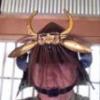
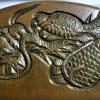


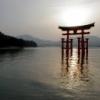
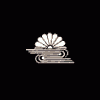
.thumb.png.4c5df79fec171b2dc4a23af38e280a4d.png)







